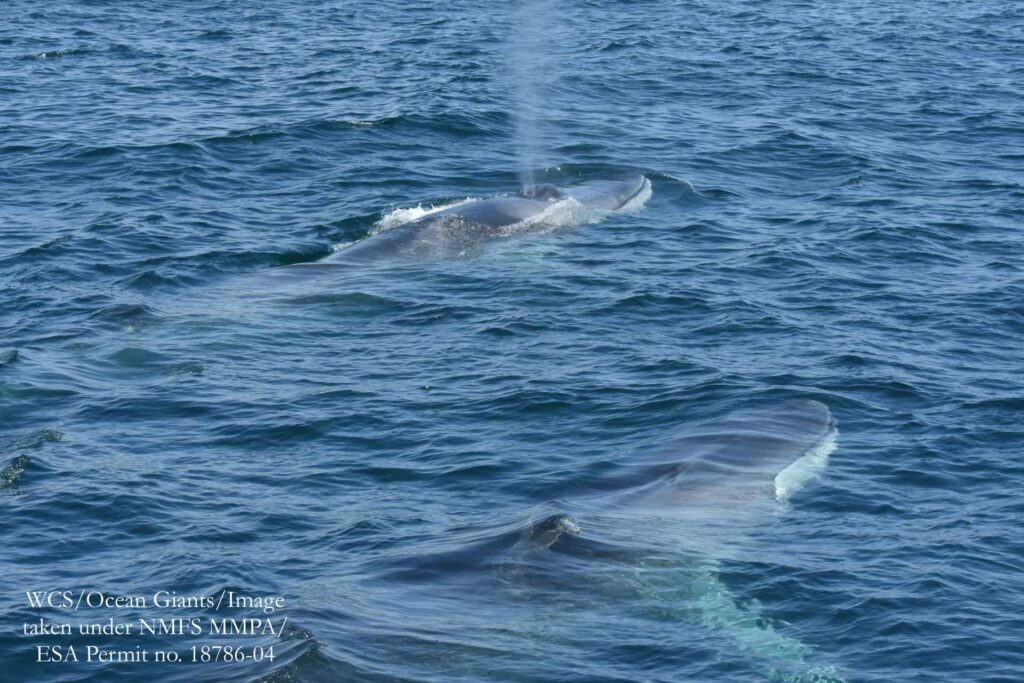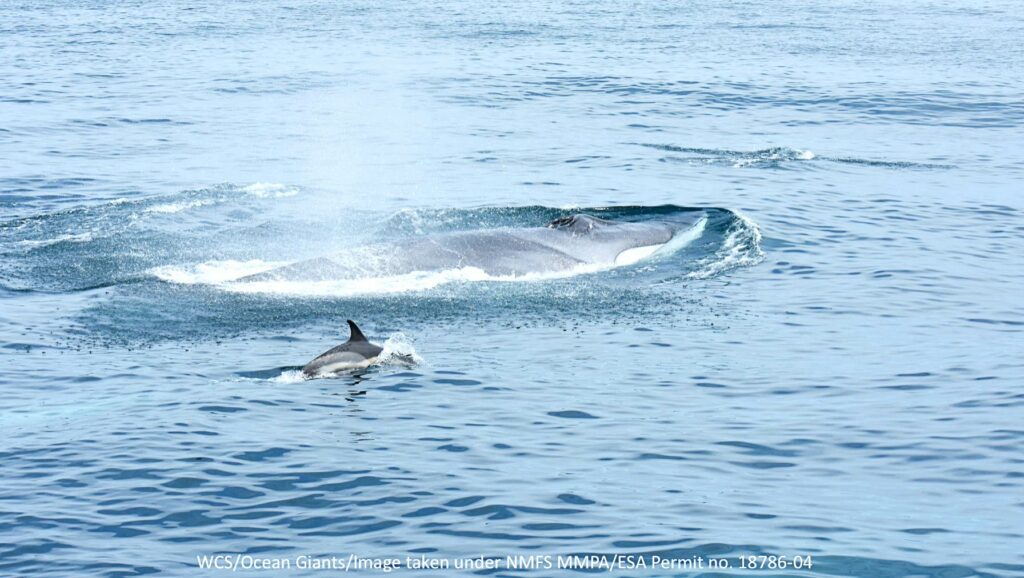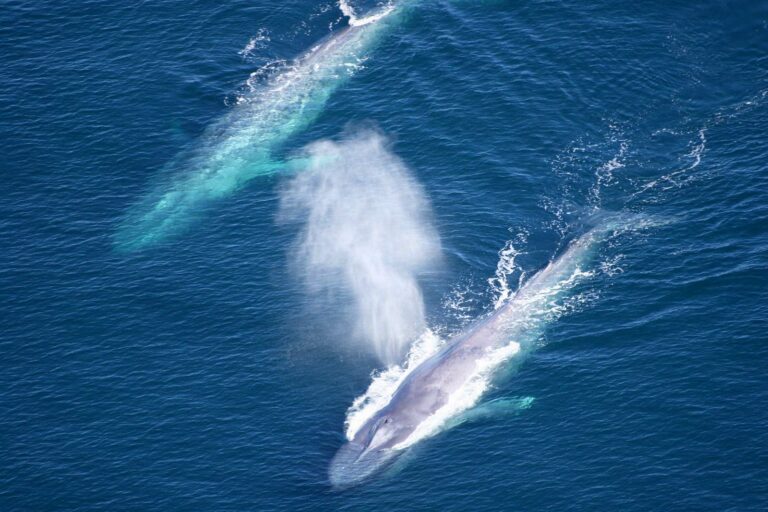Cross-breeding between blue and fin whales has been far more prevalent than had been previously realised, and is likely to have long-term consequences for Earth’s biggest animals, according to new study findings that have surprised a team of Canadian and Norwegian scientists.
And in another study published at the same time, it has been established through song analysis that fin whales are hanging out year-round in one of the world’s busiest shipping areas off the US East Coast.
Genome sequencing of North Atlantic blue whales (Balaenoptera musculus musculus), the biggest animal that has ever lived, has revealed that around 3.5% of their DNA comes from the second-largest, fin whales (Balaenoptera physalus). Every single sample taken from blue whales living today had at least some fin whale DNA in the genome.
Both species are rorqual whales, and blue/fin whale hybrids have been reported by whalers from the coasts of Lapland and Alaska for more than a century. Anecdotal evidence has been verified in whales caught near Iceland and Spain, but these instances had been thought to be unusual.
Hybrid animals are usually infertile because they lack the genetic material needed to produce viable sperm or eggs – but it seems that blue and fin whales do share a number of compatible genes.

However, it’s the blue whales that are inheriting fin whale genes rather than the other way around – perhaps because, being fewer in number, the blues are more motivated to mate not only with fin whales but with hybrids. There are an estimated 5,000–15,000 blue whales, compared to some 80,000 fin whales.
The scientists sampled 28 blue whales, mostly from across the North Atlantic and including historical museum skeletons from as early as 1876, to understand the impact whale-hunting had had on the animals’ genetic diversity.
Blue whales are IUCN-rated as Endangered, with ship-strikes, fishing-gear entanglement, marine noise, pollutants and climate change among the dangers facing their populations. The scientists are also now concerned that if blue whale DNA is lost, the species might be less well-equipped to adapt to environmental threats.
The research study, led by Sushma Jossey of the Royal Ontario Museum’s Department of Natural History, is published in Conservation Genetics.
Fin whales drawn to New York Bight
A separate study based on whale-song, carried out by the Wildlife Conservation Society (WCS) and Woods Hole Oceanographic Institution (WHOI), has found that New York Bight, one of the world’s busiest waterways, is an important year-round habitat for fin whales.
This part of the Atlantic ranges from Montauk, New York to Cape May in New Jersey, and the authors of the study say that their findings will help in developing effective management strategies to protect the species. Current strategies such as imposing seasonal boat-speed restrictions are inadequate if the whales are present year-round.
“We used passive acoustic monitoring to examine monthly and yearly patterns in fin whale song from 2017 to 2020,” explained lead author Carissa King-Nolan, a WCS assistant marine conservation scientist. “These song patterns gave us valuable insight into the year-round presence and behaviour of fin whales.”
WHOI built, deployed, operated and recovered the acoustic buoys that not only provided the scientific data for the study but regularly alert industry, government and the public when whales are nearby.
The researchers analysed archived recordings from a total of 653 days for the presence of fin whale songs. These were detected in every month of the year, though most frequently from September to December, followed by March/April. The recordings tended to be more sporadic between May and July.

Differences in the pattern – the interval between successive song notes – were noted. Songs in autumn/winter had short intervals between notes, probably representing breeding behaviour, while songs with longer note intervals in spring seemed likely to reflect foraging.
“While they may not be seen as close to shore as other whales and dolphins, it is truly remarkable that the second largest animal to have ever lived on this Earth is here in the New York Bight year-round off our coasts,” said co-author Dr Howard Rosenbaum, director of WCS’s Ocean Giants programme. The New York Bight study is published in the journal Scientific Reports.
Also on Divernet: Female killers v blue whale – a world-first, Whale song reveals lost population, Blue whales: Too busy eating to sing, Beginning of the end for whaling?, Fin whales welcomed back to Antarctica

